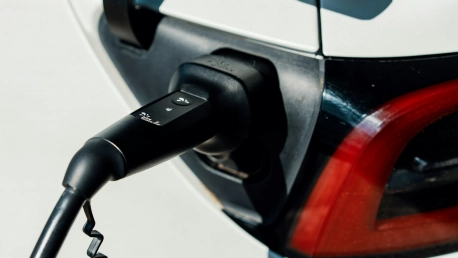The push for a greener future has heightened the focus on electric vehicles (EVs) due to an urgent need to address climate change. With UK Prime Minister Rishi Sunak’s commitment to reducing carbon emissions, the uptick in EV adoption and supportive government measures suggest a positive environmental trajectory. Nonetheless, this movement toward sustainability is tinged with concerns over the environmental and safety impacts of lithium-ion battery incidents in EVs. It is crucial to confront these risks proactively. As society progresses with eco-friendly transportation, it is imperative to balance enthusiasm with caution, ensuring safe and sustainable advancements without overlooking potential hazards associated with EV battery fires. This delicate balancing act calls for both rigorous oversight and ongoing research to prevent green initiatives from leading to unforeseen complications.
The Rise of Electric Vehicles: A Green Leap Forward
The Enthusiastic Adoption of Electric Vehicles
The allure of electric vehicles is undeniable. With their promise of a cleaner environment and the potential to alleviate the heavy burden of carbon emissions, EVs have grabbed the attention of eco-conscious consumers worldwide. Manufacturers are responding to this demand, offering an ever-growing array of models. Substantial government initiatives, like those in the UK, are further sweetening the deal for potential buyers, making the shift from traditional combustion engines to electric powertrains an increasingly accessible choice for the masses.The investment in EV infrastructure is no less enthusiastic. Governments worldwide are pumping money into the expansion of charging networks, easing one of the significant pain points for potential EV owners. This infrastructural overhaul paves the way for electric vehicles to become not just aspirational tokens of environmental stewardship but also the new standard for personal transportation.
The Environmental and Economic Impetus
As nations grapple with the existential threat of climate change, the shift towards green energy sources has become a rallying cry for action. Electric vehicles have thus emerged as one of the linchpins in the strategy to curb greenhouse gas emissions. Their proliferation is seen not only as an environmental imperative but also as a buffer against the volatile prices and political entanglements of fossil fuel dependency.Further strengthening the case for EVs is the economic calculus. The long-term cost savings on fuel and maintenance, contrasted against the rising costs of gasoline and diesel, present a compelling argument for individuals and fleet operators alike. The trajectory is clear: the future of transportation is poised to be dominated by electric vehicles, promising a cleaner and more economically sustainable tomorrow.
Safety Concerns Lurking Behind Batteries
The Threat of Lithium-Ion Battery Fires
For all their benefits, the lithium-ion batteries that power EVs are not without their perils. The phenomenon of thermal runaway, where a battery can overheat and catch fire, has cast a shadow over the industry’s growth. These fires are fearsomely intense and difficult to extinguish, posing significant risks to property and life. Industry experts, including insurance companies and fire safety professionals, have been sounding the alarm, ushering in an era where such risks can no longer be sidelined.As the number of EVs on the road increases, so does the potential for these battery fires. This unsettling trend has put a spotlight on the need for enhanced safety measures, more robust fire suppression systems, and comprehensive research into battery technology. The pursuit of sustainability must account for these risks to ensure the enduring viability of electric vehicles.
Responding to the Hazard
With the incidence of lithium-ion battery fires on the rise, emergency services like the London Fire Brigade have been forced to rethink their strategies. These fires require new techniques and equipment to tackle effectively. Such incidents also prompt an overdue discussion about the safety standards for EVs and the infrastructure supporting them.The burden of mitigating these hazards is shared across the industry. Manufacturers are in a constant race to improve battery safety technology. Meanwhile, insurance companies and regulators are recalibrating their risk assessments, ensuring that the drive toward a greener future doesn’t lead to a blind alley where safety is compromised. All stakeholders must engage in a collaborative effort to develop solutions and convey information regarding the proper handling, charging, and disposal of these powerful batteries.
Addressing the Implications of Green Initiatives
Balancing Innovation and Environmental Preservation
The dilemma facing the green automotive industry is stark: can the very advancements designed to preserve our environment end up threatening it? It’s a complicated issue that underlines the importance of a measured, holistic approach to environmental sustainability. As new technologies emerge, they must be scrutinized not only for their ecological benefits but also for potential drawbacks.This balance between innovation and preservation necessitates a nuanced perspective. It’s not enough to simply champion the adoption of electric vehicles; there must also be a commitment to continuous improvement and risk mitigation. The goal is to forge a path where technological progress and environmental responsibilities coexist symbiotically, ensuring that our efforts towards a cleaner world don’t backfire with unintended consequences.
The Role of the Insurance Sector in a Green Future
The insurance sector, tasked with managing risks, now grapples with the nuances of green technology, notably electric vehicle (EV) battery fires. It is crucial for insurers, including small brokers, to grasp these challenges and adjust policies accordingly. This situation demands industry-wide agility and constant learning to insure green tech effectively. Whether they’re large firms or individual agents, they must stay abreast of developments to ensure that the push towards sustainable energy doesn’t compromise safety or reliability. With the right insights and strategies, the industry can contribute to a durable and eco-friendly future while mitigating novel risks. This balance is essential as we progress with eco-conscious initiatives.









